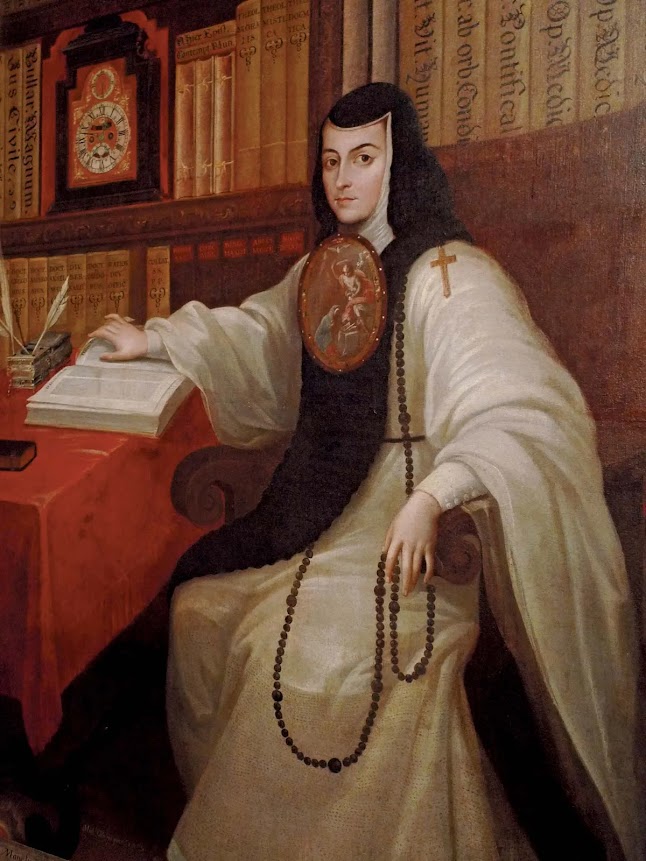Historical Women of Power II: Sor Juana Inés de la Cruz
Born as Juana Inés de Asbaje y Ramírez de Santillana in 1648, Juana is the reason I renamed my 'Ancient Women of Power' series to the 'Historical Women of Power' series. Despite being born far from the classical period, her feminism and strikingly modern thought were too inspirational not to include.
She was born in New Spain, Mexico, to descendants of Spanish immigrants. Despite her link to the noble Spanish, she seemed destined for a middle-class life, as she was born out of wedlock. Her father, a Spanish military officer, left her mother to raise Juana and her sisters alone. Despite her illiteracy and Mexican society's misogyny, Juana's mother successfully ran one of her father's estates and was determined on educating her children in the way she never was. It was perhaps her mother's revolutionary ideas about a woman's role in society that inspired Juana to pursue a life in scholarship.
A painting of Sor Juana, rocking what I believed were microbangs. I later learned it's a veil.When Juana was older and found out that university education at the time was reserved for high-class men, she begged her mother to allow her to attend in disguise, but her mother refused. Though disheartened by her mother's refusal, Juana found solace in her Grandfather's vast library, where she taught herself classical philosophy, Latin, mathematics, and the ancient Aztec language Nahuatl.
Juana's uncharacteristic intelligence quickly drew the attention of the Viceroy of Mexico in the capital city, and Juana was called to the court to serve as a Lady in Waiting. Here in the courts, she wrote poetry and plays - and although her works were controversial, she finally was rewarded with jewels and gold for her daring creativity and passion for the arts. However, she quickly also drew a lot of unwanted attention from men trying to wed her. More interested in knowledge than weddings, Juana looked for a way out of betrothal. In such a patriarchal and Catholic nation, one might think Juana had no escape from men. However dire her conditions, though, they created the perfect situation for her escape from society.
Juana became a nun, under the guise of the church. At 20, she entered the convent - allowing her to retain her respect and her independence, whilst continuing her scholarship in peace. She took a new name: Sor (Nun) Juana Inés de la Cruz. She was considered the convent's crown jewel and created both literary and physical art during her time at the convent. She was revered as a smart, wise, worldly scholar, and was visited by academics from across the globe. She accrued a massive collection of artefacts, and a library of her own, whilst serving as the convent's librarian, archivist, and treasurer.
However, her growing power and intellect threatened some of those in the church, and in 1690, a jealous bishop published Sor Juana's private critique of a respected sermon. He suggested that Sor Juana should dedicate more of her time to prayer than to debate, as she clearly had little knowledge of theology. She replied that G-d wouldn't have given women intellect if he didn't want them to use it.
This exchange caught the attention of the conservative Archbishop of Mexico, who stripped Sor Juana of her title and collections. Bitter, but unwilling the leave the convent, Sor Juana reluctantly renewed the vows and, in a last act of defiance - signed the vows in her own blood, writing: 'I, the worst of all.'
She dedicated the rest of her life to the service of the poor and sick, and died in 1695 after a short illness contracted from a patient she had been nursing. Selfless until the end. Sor Juana is today recognized as one of the first American feminists, and appears on Mexico's 200 Pesos banknote.




Comments
Post a Comment